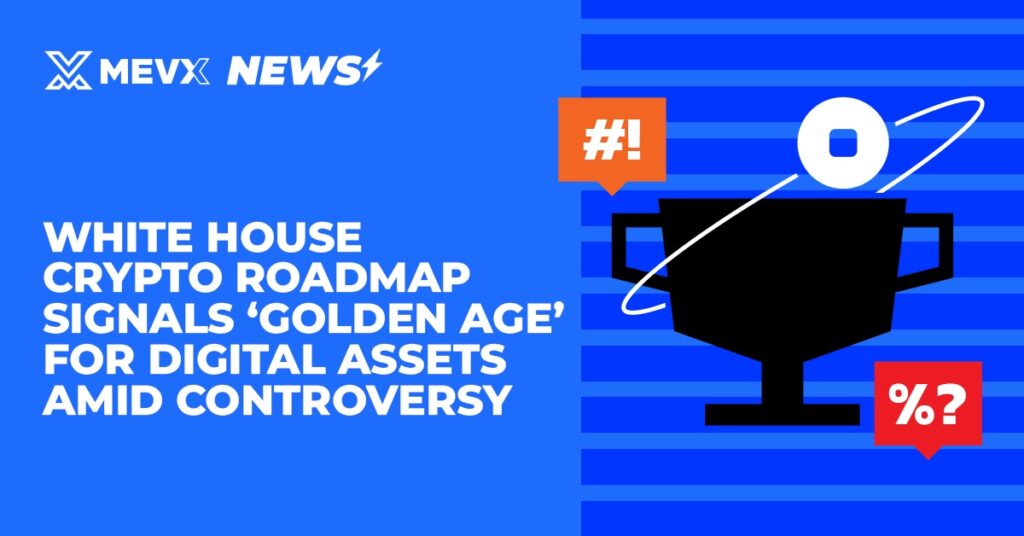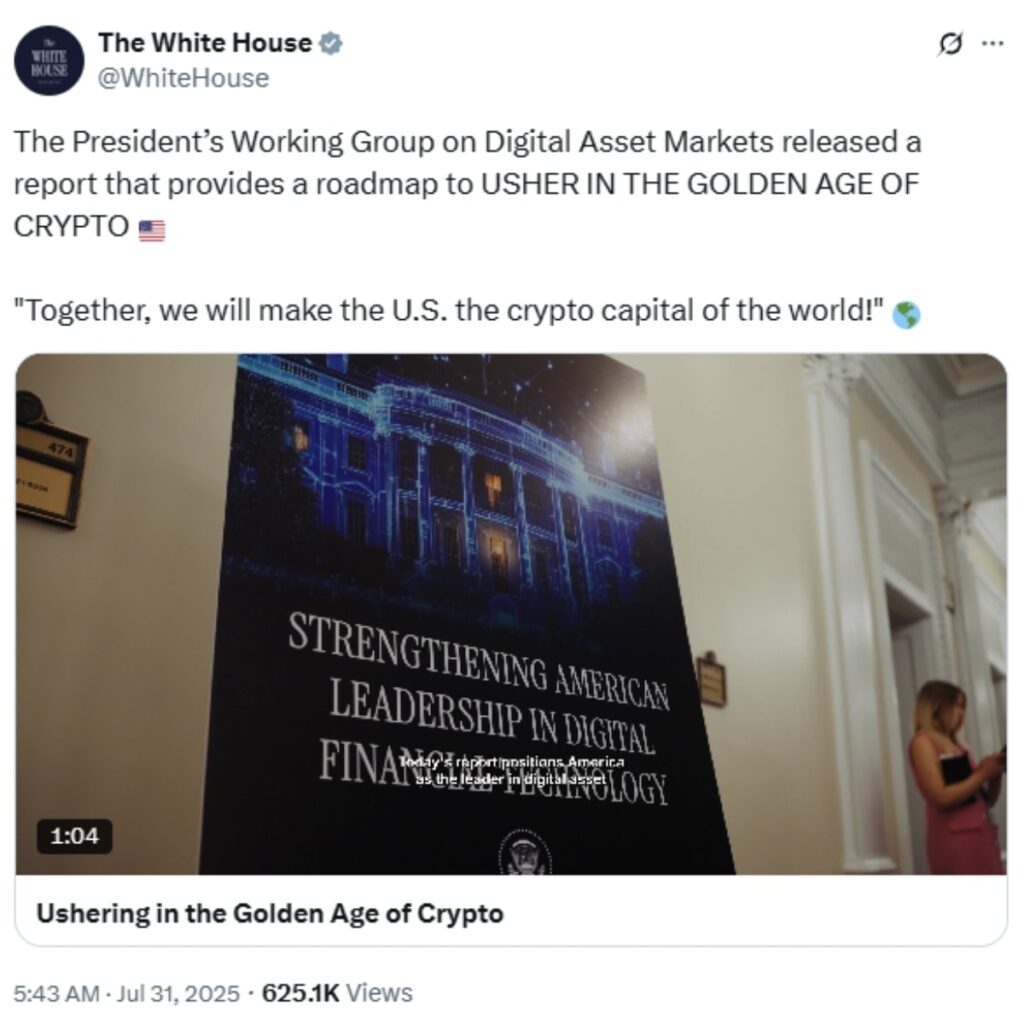- Market: On July 31, 2025, the White House issued a 160-page crypto policy guidebook in an effort to make America the “crypto capital of the world,” mere weeks after signing into law the GENIUS Act on July 18. The report provides regulatory definitions of digital assets but does not detail plans for a contemplated federal digital asset cache.
- Narrative: The plan, championed by the presidential work group of Trump, encourages DeFi, updates AML regulations, and seeks expedited rulings on regulation, but Trump’s own cryptocurrency trade, including a $57.3 million holding in the stablecoin, will represent a conflict-of-interest matter during the market’s recovery from a blow.

Through July 31, 2025, the White House released a 160-page digital asset policy roadmap dubbed “the most comprehensive piece of work on digital assets that’s ever been produced,” aimed toward making America the globe’s leader in blockchain innovation. Coming on the heels of January’s Executive Order 14178, the report of the President’s Working Group on Digital Asset Markets follows the GENIUS Act signed into law on July 18, 2025, as the federal framework for virtual coins. The roadmap is chock-full of particular recommendations on establishing the crypto markets, demystifying the role of SEC and CFTC regulation, and powering innovation, but first noticeably omits details on a controversial federal digital asset hoard and thus shortchanges business hopes. Coming on the heels of a market correction—Bitcoin priced out at $117,000 and Ethereum well short of $3,800—the pro-crypto orientation of the roadmap might support coins like those within the meme coin ecosystem on Solana, yet concern over the personal digital asset activity of President Trump mars its reception.
The report urges the SEC and CFTC to “immediately provide clarity” on registration, custody, trading, and recordkeeping, aiming to eliminate bureaucratic delays for innovative financial products like tokenized assets. It calls for Congress to pass legislation embracing Decentralized Finance (DeFi) and integrating it into mainstream finance, while modernizing anti-money laundering (AML) rules to curb illicit activity. The roadmap also recommends tax reforms, urging the Treasury and IRS to treat digital assets as a distinct asset class and clarify rules on mining, staking, and de minimis transactions. Industry leaders, such as James Butterfill of CoinShares, praised the report as “highly ambitious” for legitimizing digital asset markets but cautioned that its success depends on bipartisan support and balanced execution. The absence of details on the proposed Bitcoin reserve and digital asset stockpile, mandated by a March 2025 executive order, disappointed some, though a White House official noted infrastructure development is ongoing, with updates expected soon.

And the roadmap’s release comes on the heels of legislative muscle, such as the House vote on the Clarity Act to oversee crypto marketplaces and the Senate’s consideration of the same bill. Besides the GENIUS Act’s framework on stablecoins, they signal a course correction on the Biden administration’s regulatory hammerings, such as lawsuits against marketplaces such as Binance and Coinbase. Trump’s own personal financial interests in the field of cryptos—a $57.3 million interest in World Liberty Financial’s stablecoin, a meme coin ($TRUMP), and Trump Media’s $2 billion Bitcoin investment—have been denounced by Democrats and ethics watchdogs such as Accountable.US, who decry it as an “industry wishlist” of looking out primarily for personal financial gains. The White House also dismisses the prospect of conflicts of interest—Trump properties being placed in trust to be run by his children.
Despite a recent market correction, with meme and AI blocks dropping 5.98% and 6.75% respectively, the attention to regulatory certainty within the roadmap shall ease investor psychology and resuscitate Solana-dependent meme coins with culture-narrative-tainted dependence. Tokens began on protocols such as LetsBonk, and having outstripped Pump.fun issuances of memecoins, they shall competently take on less regulatory uncertainty. Instructed traders identify gains from a pro-crypto flip of policies but risks galore owing to market volatilities and possible waits from legislatures. The market transformation prospect in the White House plan, in the event it becomes reality, shall be paradigm-shifting and redefine the world of cryptos with innovation and solutions to ethical and regulatory questions.
Share on Social Media:
